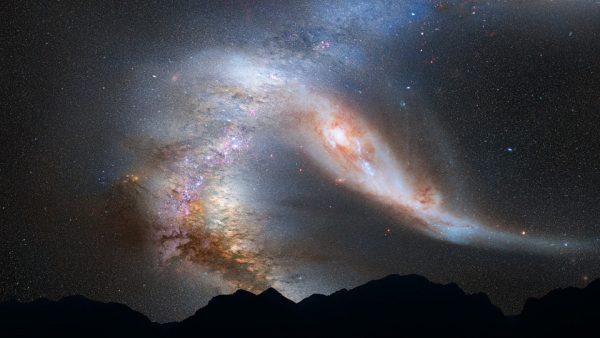Everything we think we know about the shape of the universe could be wrong. Instead of being flat like a bedsheet, our universe may be curved, like a massive, inflated balloon, according to a new study.
That’s the upshot of a new paper published today (Nov. 4) in the journal Nature Astronomy, which looks at data from the cosmic microwave background (CMB), the faint echo of the Big Bang. But not everyone is convinced; the new findings, based on data released in 2018, contradict both years of conventional wisdom and another recent study based on that same CMB data set.
If the universe is curved, according to the new paper, it curves gently. That slow bending isn’t important for moving around our lives, or solar system, or even our galaxy. But travel beyond all of that, outside our galactic neighborhood, far into the deep blackness, and eventually — moving in a straight line — you’ll loop around and end up right back where you started. Cosmologists call this idea the “closed universe.” It’s been around for a while, but it doesn’t fit with existing theories of how the universe works. So it’s been largely rejected in favor of a “flat universe” that extends without boundary in every direction and doesn’t loop around on itself. Now, an anomaly in data from the best-ever measurement of the CMB offers solid (but not absolutely conclusive) evidence that the universe is closed after all, according to the authors: University of Manchester cosmologist Eleonora Di Valentino, Sapienza University of Rome cosmologist Alessandro Melchiorri and Johns Hopkins University cosmologist Joseph Silk.



